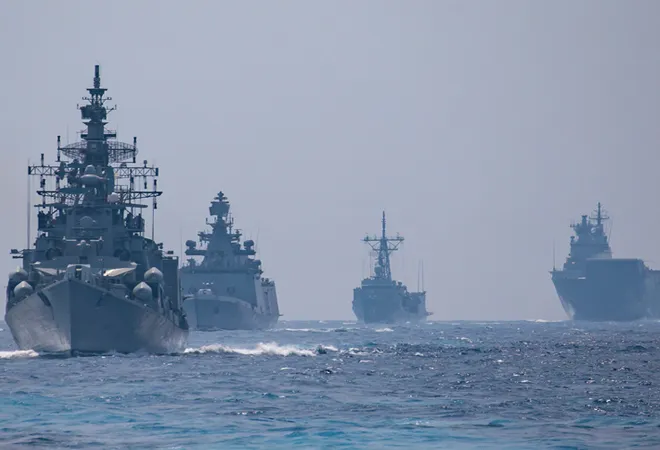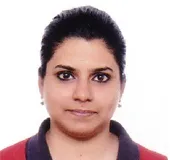-
CENTRES
Progammes & Centres
Location
With its G20 Presidency halfway through, India must push for increased engagement in the Indo-Pacific region to address the SDG financing gap

The recently released United Nations Inter-agency Task Force report on Financing for Sustainable Development 2023 is pertinent for two reasons. First, it warns of a great financial divide which is gradually turning into a developmental divide. Given the post-pandemic scenario, the world is witnessing a divergence in financing and the subsequent realisation of the SDG targets. Second, this finance deficit can possibly snowball into a long-term sustainable development divide. One of the plausible reasons is the growing imbalance between the demand for SDG finance and the existing financing mechanisms, such as Official Development Assistance (ODA). Owing to the mounting sustainability challenges and the economic impacts of the ongoing Russia-Ukraine conflict, naturally financing for development is facing the brunt. Soaring energy and food prices, weak household income growth and tighter financial conditions are some of the major aftereffects of the conflict on the global economy. As per the Organisation for Economic Cooperation and Development (OECD), the Asian economies of India and China are expected to shoulder growth in 2023 accounting for almost three-quarters of world GDP growth next year. In such a scenario, ODA or development partnerships become crucial. Given the southern-led partnerships gaining prominence in important geographies like the Indo-Pacific, development cooperation should be provided with a positive boost. As observed, the UN Report stresses on scaling up development cooperation in the long run. Recognised as a countercyclical resource in times of crisis, access to development cooperation for vulnerable communities, however, is not smooth. This became evident during COVID-19 when several of the least developed economies (LDCs) relapsed into debt risks due to worsened social and institutional conditions. Debate is also rife on the need to change the criteria for accessing ODA—income per capita is one aspect but taking into account the vulnerability metrics is equally important.
One of the plausible reasons is the growing imbalance between the demand for SDG finance and the existing financing mechanisms, such as Official Development Assistance (ODA).
With the world economy being increasingly positioned around the Indo-Pacific, conversations on building a robust development agenda need to include the small island developing states (SIDS) located in this region. Lacking the wherewithal in dealing with some of the crucial developmental challenges, these vulnerable communities are fundamental in ensuring sustainable recovery in post-pandemic times. In pre-pandemic times, according to the Economic and Social Commission for Asia and the Pacific (ESCAP) 2019 estimates, SDG-related investment needs of this region were tagged at US$1.5 trillion annually or roughly 5 percent of GDP per year. However, the pandemic has thrown these figures in disarray due to the heightened pressure on public spending on social protection- healthcare, employment, and fighting poverty, etc. As a result, there has been a major decline in government revenue with a simultaneous increase in fiscal deficit for meeting the SDGs.
Lacking the wherewithal in dealing with some of the crucial developmental challenges, these vulnerable communities are fundamental in ensuring sustainable recovery in post-pandemic times.
As a geographical expanse, the Indo-Pacific has emerged as the world’s economic and geopolitical hub. This region also accommodates about 65 percent of the world population, accounting for 63 percent of the world GDP, and around two-thirds of world trade. Although the region faces a number of shared development challenges owing to its size and geography, the Indo-Pacific narrative is usually spoken about in security parlance. The COVID-19 pandemic has further magnified these existing challenges. It has affected much of the global population across continents, with governments and institutions grappling to deal with the devastating social and economic consequences. Moreover, it has also set back progress on the SDGs. Protecting the longevity of critical supply chains, the increasing need for building the resilience of the island communities, transitioning from fossils to renewables to meet the growing energy demands, etc. are some of the important development goals for this region.
Considering how development cooperation has gained tremendous traction and global attention recently, several partnerships exist or are in the offing for Indo-Pacific. One can also understand this from the point of view of ‘development diplomacy’. This has been reiterated by India’s External Affairs Minister S Jaishankar as a medium to share development experiences with fellow developing nations with a view to achieving ‘human-centric globalisation’. As a developing country itself, India’s development partnership model is different compared to the West. Following the idea of ‘shared prosperity’ and ‘mutual development’, India’s partnerships are more responsive to the needs of the partner countries. This can possibly help in meeting the need for additional investment for Agenda 2030 in the region.
Considering how development cooperation has gained tremendous traction and global attention recently, several partnerships exist or are in the offing for Indo-Pacific.
In the Indo-Pacific, its development cooperation is quite strongly inclined towards the Pacific Island Countries (PICs). PM Modi’s recent visit to Papua New Guinea for co-hosting the third Summit of Forum for India-Pacific Islands Cooperation (FIPIC), is a prominent example. Giving a boost to development cooperation, India unveiled the 12-step Action plan extending support in areas of healthcare and pharmaceuticals, enhancing digital technology, promoting the SME sector, capacity-building, and training. Under the modality of triangular cooperation, India is involved with the US in capacity building and promoting health care in Fiji. Through the Indo-Pacific Oceans Initiative (IPOI) launched in 2019, India along with Australia aims to work in sectoral areas of disaster risk reduction and management; connectivity, trade and maritime transport; capacity building and resource sharing, etc. With its G20 Presidency halfway through, India must push for increased engagement in this region to address the SDG financing gap. Building future development pathways in the Indo-Pacific should feature in India’s to-do development cooperation list. In fact, the time is ripe for India to rethink its Act East Policy and transform into Act Indo-Pacific.
Swati Prabhu is Associate Fellow with the Centre for New Economic Diplomacy (CNED) at the Observer Research Foundation
The views expressed above belong to the author(s). ORF research and analyses now available on Telegram! Click here to access our curated content — blogs, longforms and interviews.

Dr Swati Prabhu is Associate Fellow with the Centre for New Economic Diplomacy at the Observer Research Foundation. Her research explores the interlinkages between development ...
Read More +